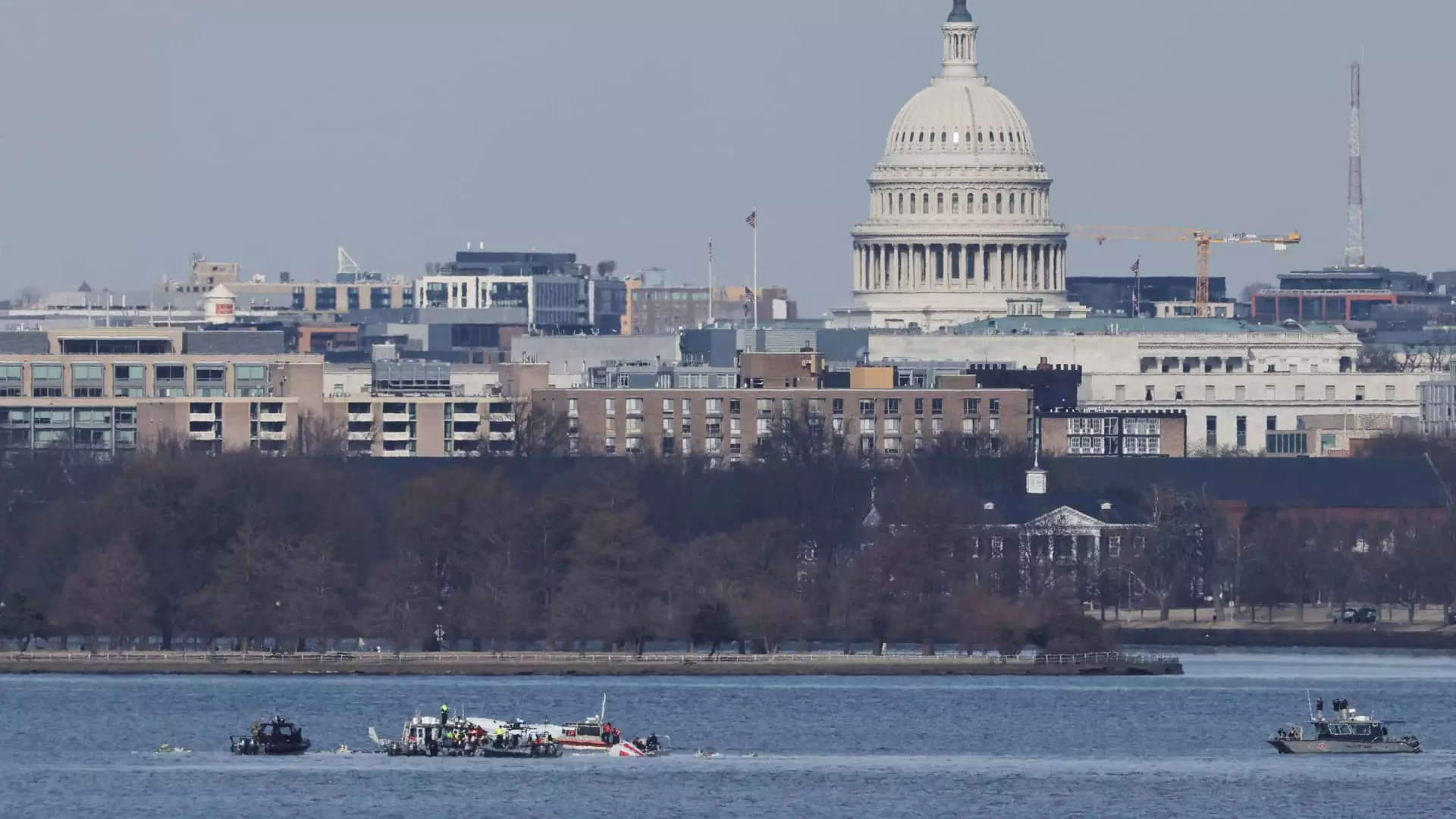The recent catastrophic collision over the Potomac River involving an Army Black Hawk helicopter and an American Airlines jetliner stands as a stark reminder of the complexities and dangers of air travel. With 64 individuals aboard Flight 5342 and three crew members in the helicopter losing their lives, this accident marks the deadliest air disaster in the U.S. since 2001. As investigators delve into the details of this harrowing incident, probing into the circumstances surrounding the crash as well as the operational protocols in the densely populated Washington, D.C. airspace, a clearer picture may eventually emerge.
On the evening of the tragedy, the PSA Airlines Bombardier CRJ-700 aircraft was making its final approach to Ronald Reagan Washington National Airport when it collided with the military helicopter. Reports suggest that the aircraft was operating at approximately 300 feet, which raises immediate questions regarding altitude regulations. As outlined by the Federal Aviation Administration (FAA), helicopters flying in D.C. airspace are confined to a maximum altitude of 200 feet, ostensibly to maintain safety in an environment characterized by its high congestion and complex traffic patterns.
This collision occurred during what was described as an annual proficiency training mission for the Black Hawk helicopter, often undertaken to ensure that pilots remain well-versed in operational protocols. However, the clear delineation of air traffic zones around Washington, D.C. complicates the narrative further. As pointed out by National Transportation Safety Board (NTSB) member Todd Inman, there exists a defined system for helicopter operations in the area, designed to streamline and safeguard air traffic.
The NTSB has taken the lead in investigating this tragic event. Underlining their commitment to a thorough analysis, NTSB Chair Jennifer Homendy stated that while the agency has gathered a considerable amount of information, it is essential to verify everything meticulously before drawing any conclusions. The critical data recovered from both the flight data recorder and cockpit voice recorder will play an integral role in understanding what led to this unforeseen calamity.
As investigators sift through the evidence, the FAA has already imposed new flight restrictions aimed at enhancing safety around Reagan National Airport and the broader D.C. vicinity. These restrictions, which will include exemptions for medical and law enforcement flights, seek to prevent future occurrences by addressing the unique challenges of operating in such a heavily trafficked area.
The crash has also shed light on the operational conditions faced by air traffic controllers. Reports suggest that the staffing levels at Reagan National Airport were subpar for such a busy period. A recent FAA safety report has indicated that the airport tower did not have a designated controller for helicopter traffic that night, a position considered critical for ensuring safe and efficient aerial operations. In an area marked by critical helicopter traffic, staffing dynamics can considerably influence safety margins.
Moreover, the incident calls into question the kind of oversight provided to controllers managing helicopters and airplanes concurrently. The FAA guidelines permit such combinations, meaning one controller could oversee multiple traffic streams, thereby adding an additional layer of complexity during high-stress scenarios like a busy arrival period.
The collision brings forth immediate and pressing concerns about air safety in the U.S. The preceding decade and a half had not experienced a fatal crash involving U.S. commercial flights, even as passenger traffic soared to new heights. This tragic mishap abruptly interrupts a long streak of advancements in aviation safety, prompting both regulatory bodies and aviation stakeholders to reevaluate existing measures.
Compounding the situation is the larger conversation surrounding the staffing of air traffic controllers, an industry-wide concern that has had lingering effects on safety considerations. As close calls and hazardous incidents proliferate in various airports, the need for thorough assessments and revised training regulations becomes increasingly apparent.
As we await further findings from the NTSB and FAA, this traumatic incident underscores the paramount importance of rigorous adherence to aviation safety protocols and efficient coordination among air traffic control agencies. Every loss of life in an accident such as this reverberates through communities and remains a poignant reminder of the unpredictable nature of air travel. The aviation industry must reckon with the potential vulnerabilities illuminated by such tragedies to ensure that this painful chapter serves as a catalyst for safer skies in the future.

